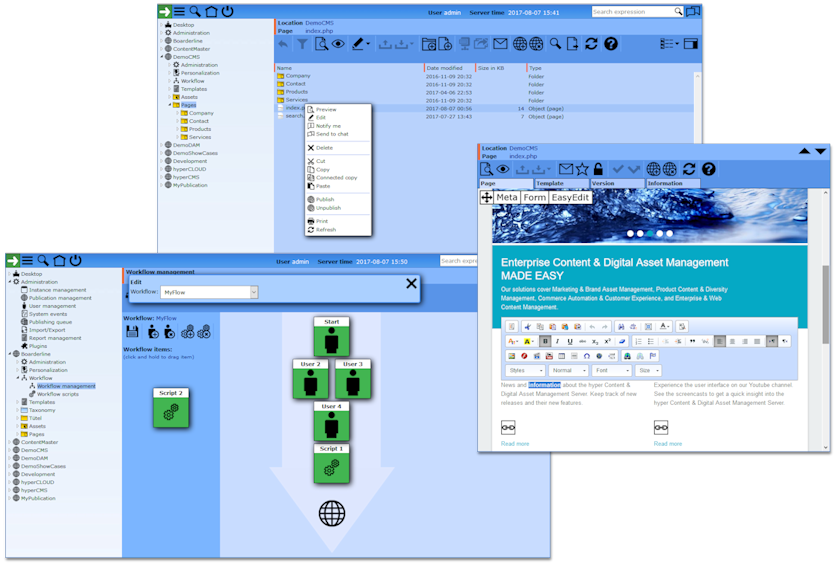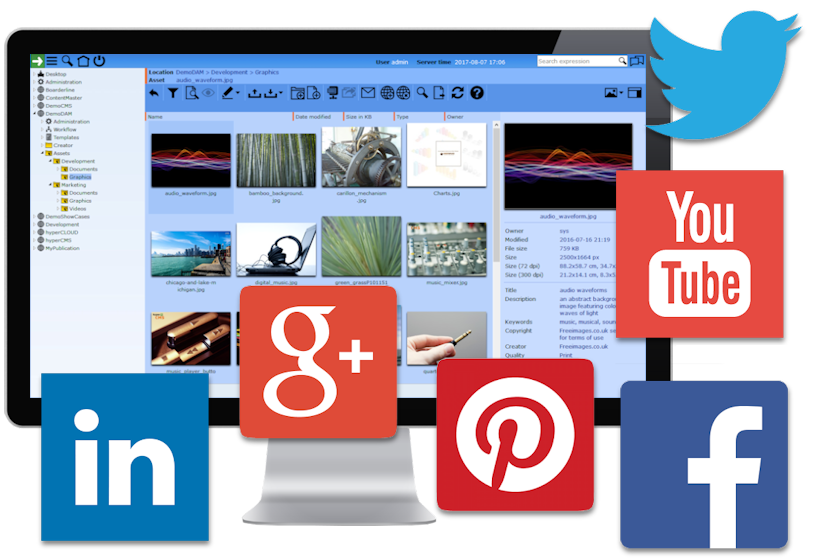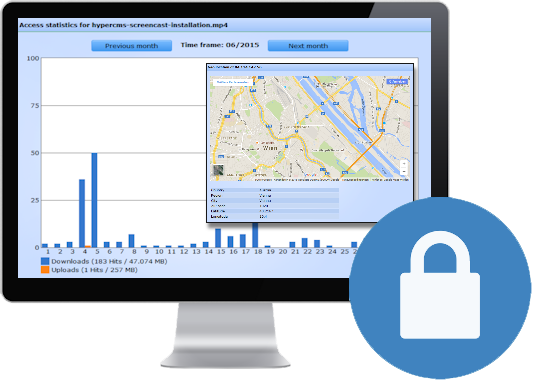What is Content Management?
Content Management (CM) is the administration of digital content throughout its lifecycle, from creation to permanent storage or deletion. The content involved may be images, video, audio, and other multimedia files as well as text.
A Content Management System (CMS) is used to manage the content of a Web site or any other kind of information of an enterprise. In order to manage content and publish it in different output formats the separation of content and design is crucial.
Typically, a CMS consists of two elements, the content management application and the content delivery application. The content management application allows the author, who may not know Hypertext Markup Language (HTML), to manage the creation, modification, and removal of content from a Web site without needing the expertise of a Webmaster. The content delivery application uses and compiles that information to update the Web site. The features of a CMS system vary, but most include Web-based publishing, format management, revision control, indexing, search, and retrieval.
A Content Management System (CMS) is used to manage the content of a Web site or any other kind of information of an enterprise. In order to manage content and publish it in different output formats the separation of content and design is crucial.
Typically, a CMS consists of two elements, the content management application and the content delivery application. The content management application allows the author, who may not know Hypertext Markup Language (HTML), to manage the creation, modification, and removal of content from a Web site without needing the expertise of a Webmaster. The content delivery application uses and compiles that information to update the Web site. The features of a CMS system vary, but most include Web-based publishing, format management, revision control, indexing, search, and retrieval.


